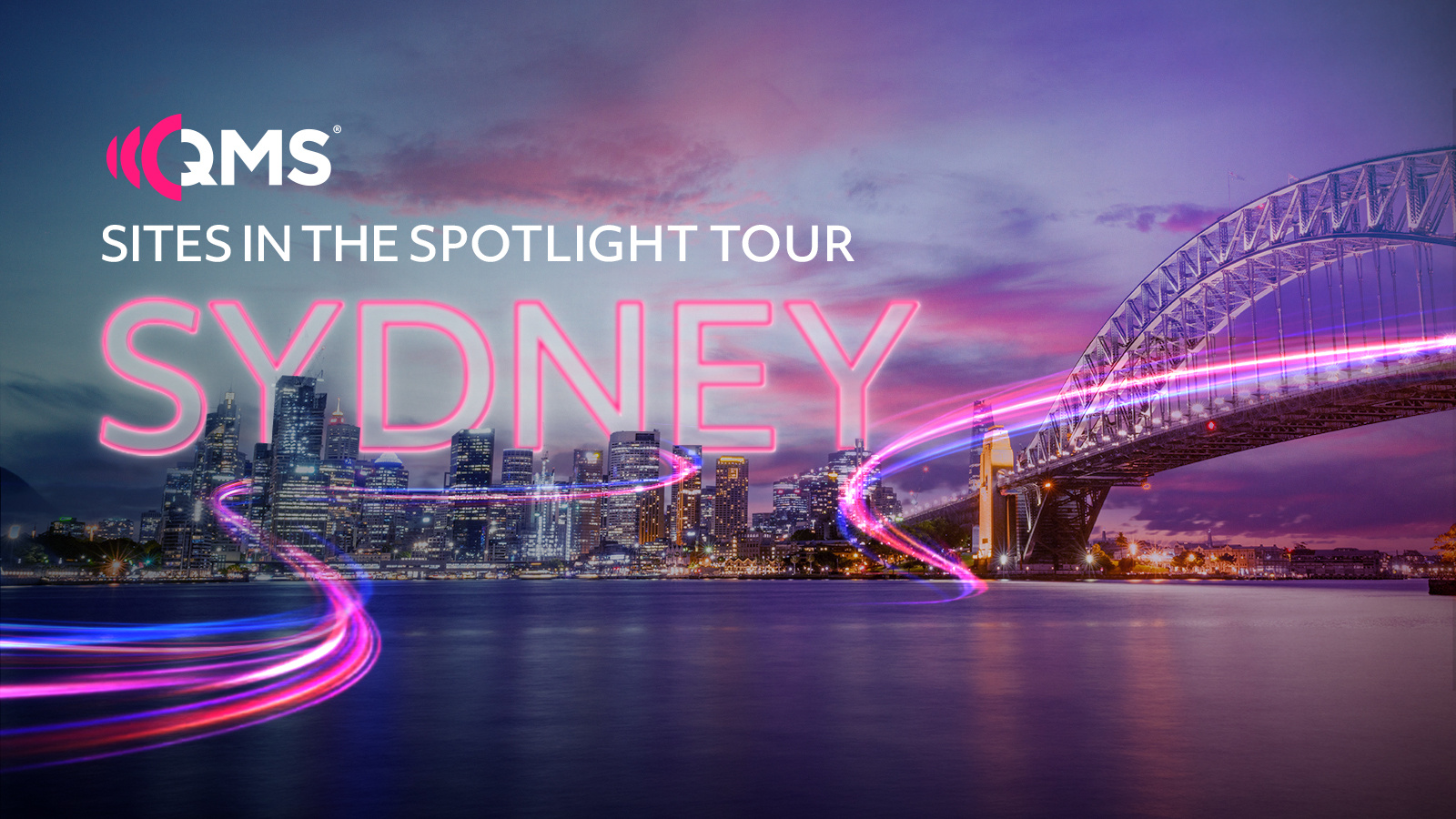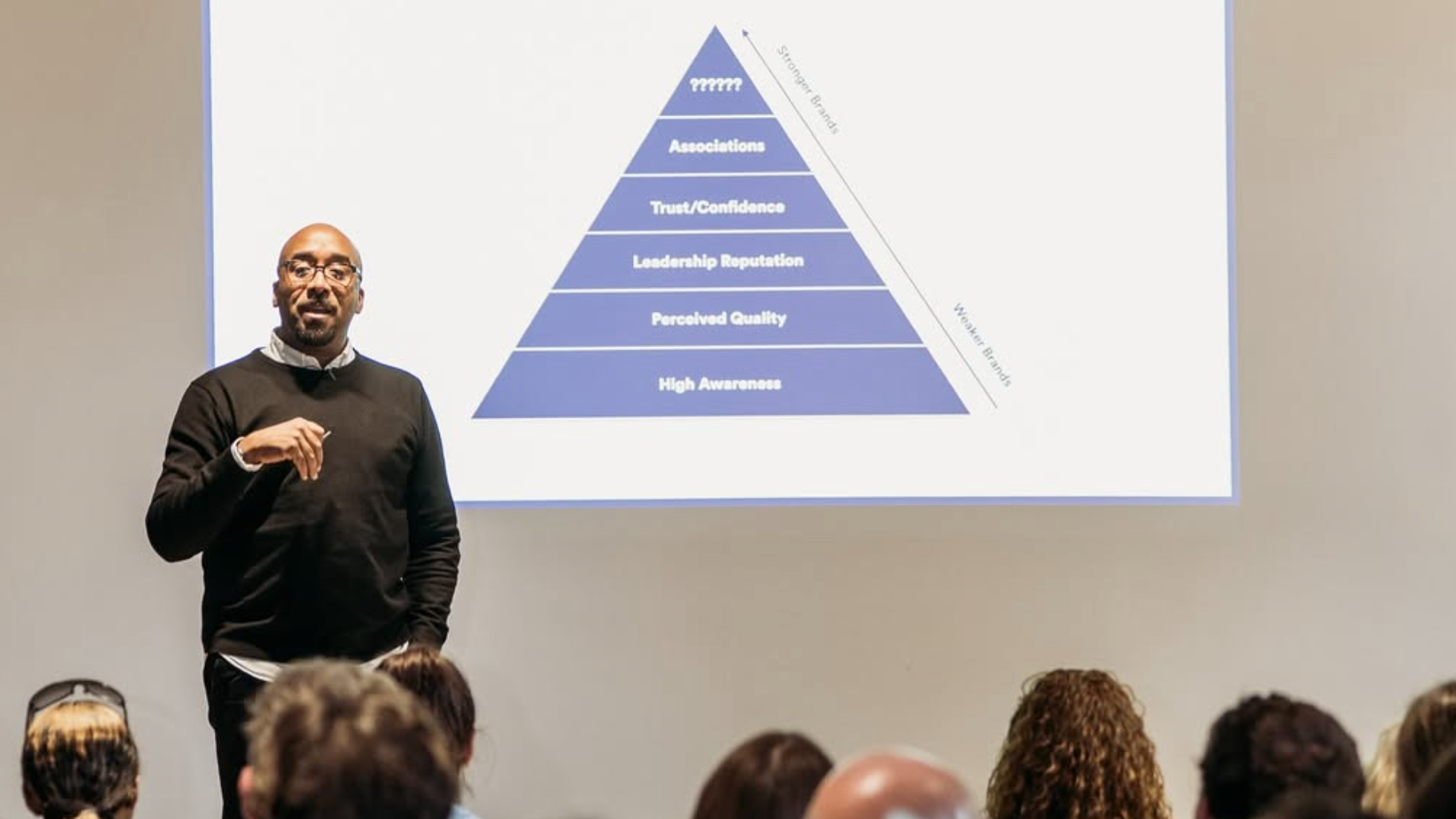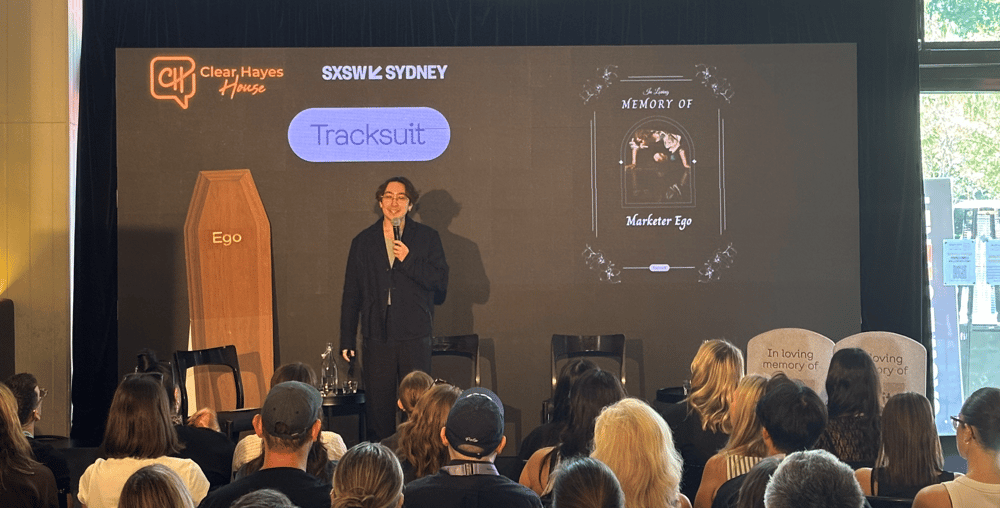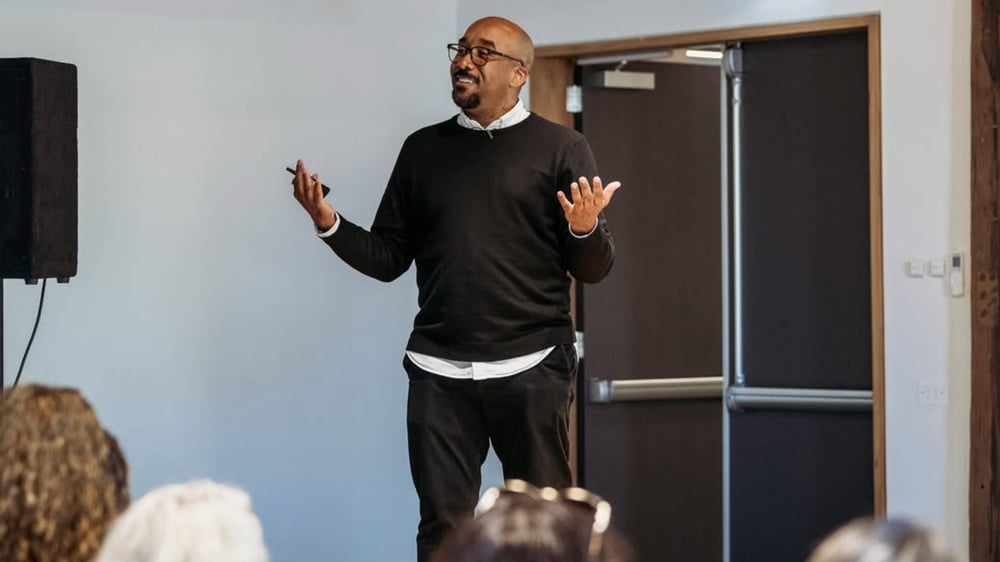


SXSW SYDNEY® 2025 INSIGHTS
We hope you enjoyed exploring our newly expanded premium DOOH network and seeing first hand how our assets reach 92% of Sydney audiences every week.
To help with your future DOOH campaign planning and buying, and to give you deeper insights into everything you explored during the tour, we’ve put together a Digital Site Card Pack with key details on each of our new Sydney sites.
What You’ll Gain:
- A deep dive into the key considerations for Digital OOH success
- Expert insights into activating data-led and creative strategies
- A tailored session to explore how this framework can elevate your brand
The Difference Between
Good and Great Brands
We absolutely loved our time at SXSW Sydney 2025 this year. But even we didn’t have the time to take it all in. So, this year, we teamed up with our friends at SKMG who got to take in some the sessions and share what they discovered along the way. This is the second article from our shared content series, written by SKMG General Manager, Sam Somers.
First up we heard how the old brand rules promised control. Big ideas ran up the chain, got shaved down in stakeholder meetings and then finally emerged as brand-safe, consensus-approved… and “slightly dead inside” according to speakers at the Brand Building Ego Death: Can You Accept You’ve Lost Control? session.
Brand strategy consultant Eugene Healy put a stake through that model once and for all. Plus, he literally had a cut-out of a coffin onstage labelled “EGO” and some gravestones, which were clearly some of the best props of the conference so far. Joined by Lyka’s Cassandra Do Carmo and The Breakout Hack’s Lauren Cain, Healy delivered a kind of marketing exorcism. The brand is no longer a monologue, it’s a group chat, and you’re just one of the contributors.
Healy likened old-school brand management to the American military: centralised command, rigid orders, top-down execution. But in 2025, the winning approach looks more like the Viet Cong (his exact words, not ours) which is, decentralised, adaptive and fast. Brands that still rely on rigid signoffs and perfect consistency are losing to those that empower teams to act on instinct.
Brand strategy consultant Eugene Healy put a stake through that model once and for all. Plus, he literally had a cut-out of a coffin onstage labelled “EGO” and some gravestones, which were clearly some of the best props of the conference so far. Joined by Lyka’s Cassandra Do Carmo and The Breakout Hack’s Lauren Cain, Healy delivered a kind of marketing exorcism. The brand is no longer a monologue, it’s a group chat, and you’re just one of the contributors.
Healy likened old-school brand management to the American military: centralised command, rigid orders, top-down execution. But in 2025, the winning approach looks more like the Viet Cong (his exact words, not ours) which is, decentralised, adaptive and fast. Brands that still rely on rigid signoffs and perfect consistency are losing to those that empower teams to act on instinct.

This was all backed by examples: Loewe blending craft and chaos with platform-specific creative; UK electronics retailer Currys using employee-generated content to make a staid electronics retailer feel human; and e.l.f. Beauty running its marketing cadence not seasonally but like “an always-on touring band”. Its teams can approve and execute in a single day and – get this – anyone, from any level, can run an idea up past the senior leadership team for sign-off.
Healy’s session ultimately told brands to let go. You can’t control the meme, the trend or the take, but you can decide how your brand shows up in the chaos. As Healy put it, the brands that survive won’t be the ones clinging to guidelines; they will be the ones that trust their people to improvise.
In the afternoon, at the ARIA Innovators Workshop, we found ourselves face to face with another who spoke with conviction, Dr Marcus Collins – the man behind cultural strategy for Queen Bey, Apple and McDonald’s, to name a few – who delivered a masterclass on what separates good brands from enduring ones. The answer? Ideology.
Collins broke down his now-famous brand pyramid: awareness at the bottom, followed by perceived quality, reputation, trust, associations, and ideology at the top. The best brands sell beliefs, not benefits. Apple sells creativity. Nike sells determination. And, as he put it, “the strongest brands transcend category and become identity”. His examples stretched from Liquid Death (“selling water, yes, but really selling rebellion”) to Barbie, whose 2023 rebirth was simply “the same belief, women’s empowerment, expressed in a contemporary way”. When the culture shifted, Barbie shifted too. Same ideology, new stories.
Healy’s session ultimately told brands to let go. You can’t control the meme, the trend or the take, but you can decide how your brand shows up in the chaos. As Healy put it, the brands that survive won’t be the ones clinging to guidelines; they will be the ones that trust their people to improvise.
In the afternoon, at the ARIA Innovators Workshop, we found ourselves face to face with another who spoke with conviction, Dr Marcus Collins – the man behind cultural strategy for Queen Bey, Apple and McDonald’s, to name a few – who delivered a masterclass on what separates good brands from enduring ones. The answer? Ideology.
Collins broke down his now-famous brand pyramid: awareness at the bottom, followed by perceived quality, reputation, trust, associations, and ideology at the top. The best brands sell beliefs, not benefits. Apple sells creativity. Nike sells determination. And, as he put it, “the strongest brands transcend category and become identity”. His examples stretched from Liquid Death (“selling water, yes, but really selling rebellion”) to Barbie, whose 2023 rebirth was simply “the same belief, women’s empowerment, expressed in a contemporary way”. When the culture shifted, Barbie shifted too. Same ideology, new stories.

During the Q&A with moderator Sosefina Fuamoli, Collins brought this to life by also raising e.l.f. Cosmetics. The brand believes in democratised access. That’s why it sells drugstore-priced products at both convenience stores and Sephora for the same price. But Collins explained it goes deeper: “Everyone at e.l.f. has meaningful equity in the company, from the CEO to the janitor. Bonuses are distributed based on EBITDA, the most equitable metric possible.” When e.l.f. realised it had the most diverse board of directors of any publicly traded company in the US – 70% women and/or people of colour – instead of patting themselves on the back, they did research. They found that most public company boards are dominated by white men named Rick, Richie, Rich, Ricky or Dick. So they ran a campaign: “So many dicks, so few of everyone else.”
“Tell the truth, but tell it slant,” Collins said, borrowing from Emily Dickinson. “Start with the soul, end with the sell.”
He offered another example when asked how brands find their ideology in the first place. Airbnb’s new CMO, Jonathan Mildenhall, sat down with the founders in 2012 and asked what the brand was about. They gave him surface-level answers about convenience, about going anywhere. He kept asking why. “Because of this.” No. “Because of this.” No. Finally, exasperated, co-founder Joe Gebbia said: “I just want people to belong anywhere.” That became the North Star. Don’t travel like a tourist. Travel like you belong. Stay in the neighbourhood. Eat where locals eat. The ideology was there all along; it just needed excavating.
Given the musical nature of the workshop, Collins also tackled one of the room’s toughest questions: can you separate the art from the artist? His answer was refreshingly human. “Rationally, I stopped listening to R. Kelly because I didn’t want to pay this man anything. But then Ignition Remix comes on and... are you kidding me?” He admitted struggling with Kanye, whose current beliefs are “antithetical to almost everything I believe”, but whose earlier work was so formative that erasing it feels like “losing a part of myself”. The key, he said, is context. Some songs no longer feel right to listen to. Others still transport him back to moments that mattered. Culture is messy because humans are messy.
It’s this framing that marketers often miss. “We don’t buy products,” Collins said. “We buy meaning. We buy a piece of ourselves reflected in the story.” Whether it’s Nike’s “Just Do It” gospel or Tyler, The Creator’s ideology of freedom, the brands and artists that endure are those that give people something to believe in.
It’s a pretty clear takeaway. Stop obsessing over what you’re making and start articulating why it exists. Meaning takes time to build, trust takes repetition and culture moves fast… but beliefs endure.
If your brand were a faith, what would its gospel be?
“Tell the truth, but tell it slant,” Collins said, borrowing from Emily Dickinson. “Start with the soul, end with the sell.”
He offered another example when asked how brands find their ideology in the first place. Airbnb’s new CMO, Jonathan Mildenhall, sat down with the founders in 2012 and asked what the brand was about. They gave him surface-level answers about convenience, about going anywhere. He kept asking why. “Because of this.” No. “Because of this.” No. Finally, exasperated, co-founder Joe Gebbia said: “I just want people to belong anywhere.” That became the North Star. Don’t travel like a tourist. Travel like you belong. Stay in the neighbourhood. Eat where locals eat. The ideology was there all along; it just needed excavating.
Given the musical nature of the workshop, Collins also tackled one of the room’s toughest questions: can you separate the art from the artist? His answer was refreshingly human. “Rationally, I stopped listening to R. Kelly because I didn’t want to pay this man anything. But then Ignition Remix comes on and... are you kidding me?” He admitted struggling with Kanye, whose current beliefs are “antithetical to almost everything I believe”, but whose earlier work was so formative that erasing it feels like “losing a part of myself”. The key, he said, is context. Some songs no longer feel right to listen to. Others still transport him back to moments that mattered. Culture is messy because humans are messy.
It’s this framing that marketers often miss. “We don’t buy products,” Collins said. “We buy meaning. We buy a piece of ourselves reflected in the story.” Whether it’s Nike’s “Just Do It” gospel or Tyler, The Creator’s ideology of freedom, the brands and artists that endure are those that give people something to believe in.
It’s a pretty clear takeaway. Stop obsessing over what you’re making and start articulating why it exists. Meaning takes time to build, trust takes repetition and culture moves fast… but beliefs endure.
If your brand were a faith, what would its gospel be?
- Sam Somers: General Manager, SKMG
